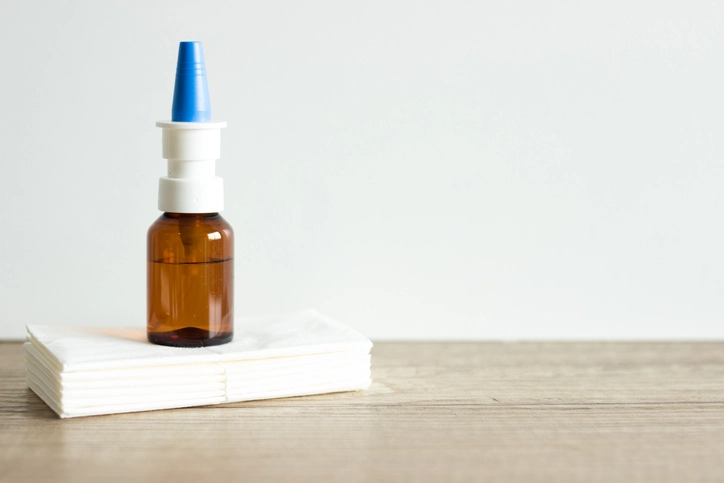Strong Foundations: Why Every Woman Can Benefit from Pelvic Floor Exercises
Strong Foundations: Why Every Woman Can Benefit from Pelvic Floor Exercises
Have you ever wondered why so many women are encouraged to practice pelvic floor exercises? Whether you’re a new mom working on postpartum recovery, looking to improve bladder control, or simply interested in healthy aging, pelvic floor exercises—often known as Kegels—offer significant benefits across a range of life stages. In this article, we’ll delve into what these exercises are, why they matter, and how you can safely and effectively integrate them into your daily routine. With insights designed to feel like a warm conversation with a trusted healthcare professional, we’ll explore the subject in detail and offer practical tips to help you build a stronger foundation for overall health.
Understanding the Pelvic Floor
The pelvic floor is a group of muscles that stretch like a hammock from the pubic bone at the front to the tailbone at the back. These muscles support key organs including the bladder, uterus, and rectum. Their role is critical: they help control the passage of urine and feces, contribute to sexual function, and play a part in stabilizing your core.
Why Are Pelvic Floor Muscles Important?
Imagine your pelvic floor muscles as a supportive network, much like the foundation of a house. Just as a strong foundation helps maintain the stability and longevity of a building, strong pelvic floor muscles are essential in supporting internal organs and maintaining bodily functions. Under stress—whether from childbirth, aging, or even chronic cough—these muscles can weaken. When this happens, you might experience urinary incontinence, decreased sexual satisfaction, or even pelvic organ prolapse.
The Role of Pelvic Floor Exercises
Pelvic floor exercises, commonly known as Kegel exercises (named after Dr. Arnold Kegel, who popularized them), are designed to target these muscles. The concept is simple yet powerful: strengthening these muscles through regular exercise can restore control and improve function.
A Quick Overview of Kegel Exercises
At its core, performing a Kegel exercise involves tightening and then relaxing the pelvic floor muscles, much like you would do when trying to hold in urine midstream. However, to truly benefit, it’s important to perform the exercises correctly and consistently.
How to Identify the Right Muscles
Before you even begin your routine, identifying the correct muscles is key:
- During Urination: Try to stop your urine flow midstream. The muscles you use for this are your pelvic floor muscles. (Note: This technique is just for identification—avoid routinely stopping urine flow as a form of exercise).
- Masculine Memory: Once you recognize these muscles, practice contracting them without clenching your buttocks or stomach muscles too much. Focus solely on the pelvic area.
Basic Kegel Routine
- Contract: Tighten your pelvic floor muscles and hold for 3-5 seconds.
- Release: Relax completely for an equal amount of time.
- Repeat: Aim for 10-15 repetitions per session.
- Build Gradually: Start with 2-3 sessions per day and gradually increase both the hold time and the number of repetitions as your muscles get stronger.
Benefits of Pelvic Floor Exercises
The benefits of adopting a regular Kegel routine extend into several key areas of health, particularly in the realms of postpartum recovery, bladder control, and healthy aging.
Postpartum Recovery
Childbirth is a physically demanding process that can stretch and weaken the pelvic floor muscles. After delivery, many women experience urinary incontinence, pelvic discomfort, and even loss of sexual satisfaction. Pelvic floor exercises play an integral role in recovery by:
- Restoring Muscle Tone: Regularly performing Kegels can accelerate the return of muscle strength and tone after childbirth.
- Reducing Incontinence: Strengthening these muscles helps often mitigate postpartum urinary incontinence by increasing control.
- Enhancing Sexual Function: Improved muscle tone can enhance sensation and sexual satisfaction, both for you and your partner.
- Promoting Healing: Gentle exercise encourages blood flow, which is essential for tissue repair and recovery.
For many women in Toronto and beyond, working with a knowledgeable healthcare provider to develop a postpartum care plan that includes pelvic floor exercises can provide a tangible path toward regaining strength and confidence.
Bladder Control
Incontinence isn’t only associated with childbirth; it can also result from aging or other factors like high-impact physical activities. Weak pelvic floor muscles can lead to bladder leakage, which can be both physically uncomfortable and emotionally stressful.
- Improved Bladder Control: When you strengthen the muscles that support the bladder, you gain greater control over urination. This can mean fewer trips to the restroom and less anxiety about leakage.
- Prevention of Leakage: Regular Kegels help prevent the occurrence of leaks during everyday activities like laughing, coughing, or lifting.
- Quality of Life: Enhanced bladder control translates to greater freedom, confidence, and overall quality of life.
Women experiencing frequent bladder leakage should consider speaking with a healthcare provider about starting pelvic floor exercises, which not only provide relief but help manage the condition long-term.
Aging Gracefully
Aging involves natural changes in muscle strength, and the pelvic floor is no exception. As estrogen levels drop, particularly during and after menopause, these muscles may weaken, leading to challenges such as incontinence or pelvic organ prolapse.
- Maintaining Strength: Kegel exercises can help delay or minimize age-related weakening of the pelvic floor, allowing you to maintain better control over urinary functions.
- Preventing Incontinence: By incorporating pelvic floor training into your regular fitness routine, you can significantly reduce the risk of urinary incontinence as you age.
- Boosting Confidence: A strong pelvic floor contributes to overall physical stability, balance, and sexual well-being, which are all crucial for a confident and active lifestyle.
Adopting a lifelong commitment to pelvic floor health can be a key component in aging gracefully and continuing to enjoy an active, independent life.
Integrating Pelvic Floor Exercises into Daily Life
Now that we understand the benefits, the question turns to: How do we integrate these exercises into our busy lives without additional stress? The reassuring news is that pelvic floor exercises can be done almost anywhere—whether you’re at home, at work, or even on public transit.
Finding the Right Moments
- While Sitting: Whether you’re at your desk or in a quiet moment at home, try doing a few gentle contractions while you sit.
- During Routine Activities: Consider incorporating Kegels while cooking, waiting in line, or watching TV.
- At Work: Many women find discreet moments in the office for a few sets. Because these exercises are subtle, they won’t interrupt your work routine.
Overcoming Common Barriers
Even with an understanding of their importance, many women struggle with incorporating pelvic floor exercises effectively into their lives. Let’s discuss some common barriers and ways to overcome them:
- Consistency Issues: Like any exercise, consistency is key. Use reminders on your smartphone or schedule them as part of your morning and evening routine.
- Uncertainty About Technique: Not everyone is confident they’re doing the exercises correctly. Consider having a consultation with a healthcare provider, such as a Nurse Practitioner at a trusted clinic, to ensure proper technique.
- Time Constraints: The beauty of Kegel exercises is that they only require a few minutes a day. Even short, regular sessions can lead to meaningful improvements over time.
At Care& Family Health, our supportive team of Nurse Practitioners understands the challenges of integrating new habits into busy lives. They provide personalized guidance, whether in-clinic or via phone/video consultations, and are always available to answer your questions about pelvic floor health.
Practical Tips for Effective Pelvic Floor Workouts
Enhancing your pelvic floor exercise routine involves both proper technique and lifestyle adjustments. Here are some actionable tips to help you succeed:
Exercise Safely and Correctly
- Warm-Up: Before beginning your routine, take a few moments to breathe and relax. A short warm-up helps increase blood flow to the muscles.
- Avoid Overworking: Like any muscle group, the pelvic floor can experience fatigue if overworked. Start with a manageable number of repetitions and gradually increase.
- Listen to Your Body: If you experience pain or discomfort, slow down or take a break, and consult a healthcare professional for personalized advice.
Incorporate Breathing Techniques
Proper breathing can enhance the effectiveness of your pelvic floor exercises:
- Engage Your Core: Deep, diaphragmatic breathing not only calms your mind but also helps engage your core muscles, which supports the pelvic floor.
- Coordinate Movements: Breathe in as you relax and breathe out as you contract your pelvic floor. This coordination can maximize muscle engagement and improve your overall technique.
Combine with Other Exercises
Consider coupling pelvic floor exercises with other forms of exercise known to boost core strength:
- Pilates and Yoga: Both practices emphasize the connection between the mind and bodily movement, offering an excellent foundation for pelvic floor strength.
- Strength Training: Light resistance or bodyweight exercises that focus on the core can be complementary to your Kegel routine.
- Tailored Programs: Some healthcare providers offer personalized exercise programs that incorporate pelvic floor training with overall physical activity. These can be particularly beneficial if you have undergone childbirth or are managing age-related changes.
Real-World Insights and Success Stories
To illustrate the profound impact of pelvic floor exercises, consider the story of Emily, a 34-year-old new mother who struggled with urinary incontinence after her second childbirth. Initially frustrated by the limits on her daily life, Emily sought help from her family clinic. With guidance on performing Kegel exercises correctly and consistently, she experienced a significant reduction in leakage over several weeks. Today, Emily not only feels more confident in her postpartum recovery but also continues practicing her routine as a preventive measure.
Stories like Emily’s are common among women who dedicate a few minutes a day to strengthening their pelvic floor. They remind us that small, consistent actions can lead to life-changing results.
Making a Personal Commitment
Embarking on a journey to strengthen your pelvic floor is more than just an exercise routine—it’s a statement that you value your long-term health and well-being. Whether your goal is to overcome postpartum challenges, enhance bladder control, or simply support healthy aging, taking this step is a powerful way to invest in yourself.
Consider This a Daily Gift
Think of pelvic floor exercises as a daily gift you give to your body—an investment that pays dividends in confidence, comfort, and overall health. It’s not a quick fix, but with perseverance, you’ll likely notice gradual improvements that can enhance your quality of life.
Integrating Technology for Ease
For those who enjoy the convenience of digital tools, apps can be a great resource for reminders and tracking progress. At Care& Family Health, our mobile app offers a host of features designed to help you manage your health, from appointment scheduling to real-time access to your health records. Using such tools in tandem with your exercise routine can make the process more engaging and consistent.
Working with Healthcare Professionals
If you ever wonder whether your pelvic floor exercises are on track, consider booking a consultation with a healthcare provider who specializes in women’s health. Nurse Practitioners at family clinics can offer valuable advice, verify that you’re using the correct technique, and even suggest adjustments to tailor the routine to your specific needs. Whether you’re in Toronto or another area, having trusted professionals by your side can make all the difference on your wellness journey.
A Holistic Approach to Pelvic Health
While pelvic floor exercises are a cornerstone of maintaining pelvic health, they represent just one aspect of a broader lifestyle approach:
- Balanced Nutrition: A diet rich in fiber and essential nutrients supports overall muscle health and can help prevent constipation, which in turn reduces strain on the pelvic floor.
- Adequate Hydration: Drinking enough water is crucial for maintaining the elasticity and function of muscles.
- Stress Management: Chronic stress can affect muscle tension throughout the body, including the pelvic floor. Techniques such as yoga, meditation, and even simple deep breathing can help keep stress levels in check.
- Regular Check-Ups: Periodic evaluations with a healthcare provider ensure that any issues with pelvic floor strength are monitored and addressed early before they become more severe.
Taking a holistic view allows you not only to improve the function of your pelvic floor but also to foster overall physical and mental resilience—a true mark of proactive, lifelong care.
Embracing Empowerment Through Knowledge
Empowering yourself with knowledge about pelvic floor exercises transforms what might seem like a trivial routine into a meaningful health practice. With each contraction and release, you’re actively building a stronger foundation for your body—and that empowerment extends far beyond physical benefits. It can enhance your self-confidence, enrich your quality of life, and even influence your overall outlook on health and wellness.
Dispelling Myths and Misconceptions
Many women fear that pelvic floor exercises might be too difficult, too time-consuming, or only necessary after childbirth. In reality, these exercises are simple, require minimal time investment, and benefit women at every stage of life. Whether you are in your 20s or entering your golden years, the positive impact of a strong pelvic floor is universal.
Building a Community of Support
Often, discussing pelvic health can feel a bit personal or even intimidating. However, remember that countless women share these concerns, and there are communities, both online and in-person, where experiences and tips are exchanged. By understanding that you’re not alone, you might find comfort and motivation in the collective journey towards better pelvic health.
A Warm Invitation to Explore Further
As you consider integrating pelvic floor exercises into your life, think of it as a journey towards nurturing your body’s strength and resilience. If you’re ever in need of personalized guidance, practical advice, or simply a caring ear to listen to your concerns, places like Care& Family Health are here to support you. Our goal is not just to help you manage specific health issues but to empower you to take control of your overall well-being. In many ways, a stronger pelvic floor can be the stepping stone to a healthier, more confident you.
To get started, try setting aside just five minutes each day for these exercises. Notice how even a few deliberate contractions can create a ripple effect in your overall health and mood. And if you ever need that extra bit of help or professional advice, remember that expert guidance is just an appointment away.
By embracing the practice of pelvic floor exercises, you can pave the way for improved postpartum recovery, enhanced bladder control, and a smoothly progressing journey through the aging process. With patience, consistency, and a bit of self-care, the benefits will unfold gradually—and you’ll be rewarded with increased comfort, confidence, and vitality.
In Conclusion
Pelvic floor exercises aren’t just another fitness trend; they are an essential part of women’s health that address real, everyday challenges across different life stages. Whether it’s the slow build-up after childbirth, the daily management of bladder control, or preparing your body for the inevitable changes that come with aging, these exercises provide a cornerstone of support.
Remember, empowerment in health starts with small, consistent actions. And while the process might seem subtle, the cumulative effects are profound. If you’re ever curious or feeling uncertain about your routine, consider reaching out for support. A consultation with a healthcare professional—such as those you’d find at Care& Family Health—can offer tailored advice that fits your unique needs. Embrace this journey with warmth, determination, and the assurance that every contraction is a step towards a healthier, more resilient you.
Frequently Asked Questions (FAQs)
- What exactly are pelvic floor exercises and how do they work?
Pelvic floor exercises, commonly known as Kegels, involve the contracting and relaxing of the muscles surrounding the bladder, uterus, and rectum. This regular practice strengthens these muscles, improves bladder control, and contributes to overall pelvic support. - How soon after childbirth can I start doing Kegel exercises?
Many healthcare providers recommend starting pelvic floor exercises soon after childbirth—often within a few days or weeks—provided there are no complications. However, it’s best to follow your provider’s guidance based on your individual recovery. - Can pelvic floor exercises help with age-related incontinence?
Yes, regular pelvic floor exercises can help maintain muscle strength, reduce symptoms of incontinence, and enhance muscle control even as you age. This practice is a proactive way to support your pelvic health over the long term. - I’m having trouble identifying the right muscles—what should I do?
If you’re uncertain about which muscles to target for Kegel exercises, a healthcare professional (such as a Nurse Practitioner) can guide you through the process. Many clinics offer personalized advice to ensure you’re performing the exercises correctly. - How long before I notice the benefits of pelvic floor exercises?
Results vary from person to person, but many women begin to notice improved muscle tone and better bladder control within a few weeks of consistent practice. Remember, patience and regularity are key to seeing lasting benefits.
By understanding your body and taking small, heartfelt actions every day, you truly pave the way to enhanced well-being. Whether you’re just starting or looking for ways to refine your routine, know that help and guidance are readily available when you need them.
Less Wait Time, More Face Time
Visit www.careand.ca to register
Contact Information:
📞 Phone: +1-647-951-4770
📧 Email: helpdesk@careand.ca
🌐 Website: www.careand.ca
Disclaimer:
This article is for informational purposes only and does not constitute medical advice. Always consult with a qualified healthcare provider for personal medical guidance. The information provided is general in nature and may not apply to individual circumstances.







